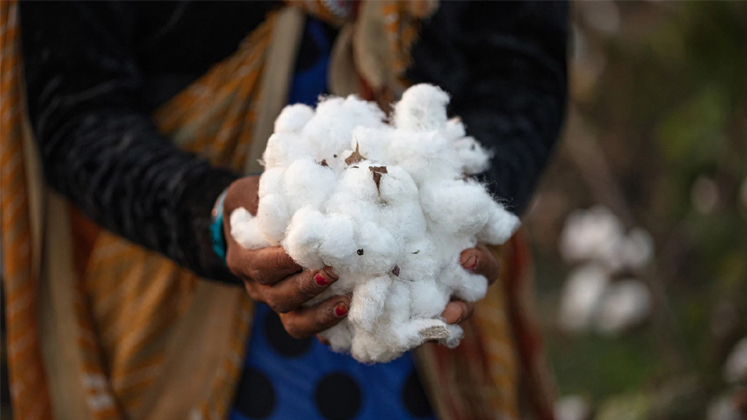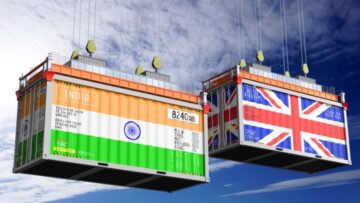
Many times the concept of regeneration is confused with circularity. However, the concept is more deep-rooted. Fundamentally, the idea of regeneration has more to do with focusing on doing less bad or having less of an impact; it puts the focus on doing more good and creating a positive impact by improving the land, revitalising the soil, restoring nutrients and capturing carbon from the atmosphere into the soil. Figuratively, our soils have actually far too little carbon and have lost about 50–70 per cent of their original carbon content. Regenerative farming practices can help restore the balance by sequestering carbon from the atmosphere into our soil. But the question here is how regenerative farming helps the fashion industry in general.
Regenerative farming for fashion
The natural fibres used in the fashion industry, whether they’re animal-based or plant-based, are all grown/raised on farms or ranches. And so, when the fibre is grown or the fibre-producing animal is raised as part of a regenerative system, then that fibre is regenerative.
For instance, if a cotton farmer is farming using regenerative, holistic management practices such as cover crops, crop rotation, no-till, composting and pasture cropping to grow his cotton, that cotton is regenerative cotton. As per data, 8,663 litres of water is needed to produce 1 kg of conventional seed cotton and 20,217 litres of water is needed to produce 1 kg conventional lint cotton. And around 94 per cent of Indian cotton is grown using genetically modified seeds (GMOs).
To overcome the drawbacks, Grameena Vikas Kendram brought in the RESET programme. RESET stands for Regenerate the Environment, Society, and Economy through Textiles. RESET is a holistic systems approach that encourages continual on-farm innovation for environmental, social and economic well-being. It believes that the textile industry alone can regenerate ecosystems, empower lives and unite people. RESET farmers cultivate cotton by using the principles of agroecology. This ensures that the farming is GMO and free of agrochemicals like pesticides, weedicides and synthetic fertilizers. Only cow based soil nutrient management is used which includes bio-manures and locally available natural inputs and plant concoctions to control insect pests and diseases. Moreover, intercropping with pulses further helps in improving the soil quality.
Following these safe practices, RESET has been able to convert 62,500 acres of cotton from degenerative to regenerative production systems. The Kendram has been cultivating cotton in 250+ acres of land with around 232 farmers in 26 villages of the two Telugu states aiming to create the world’s first regenerative cotton value-chain.
Why does it matter?
With the fashion and apparel industry dominating the globe in terms of business, its impact on the earth and environment is huge. Clothing being a necessity, there is no way that a reduction in consumption or production can be brought in. However, it is time to go back to the roots. In the historic times, clothing fibres were grown locally, using the byproducts of our food cultivation. So, to make it safe and easy for the environment, just following the sustainable route is not enough.
Instead of thinking much, regenerative principles need to be practised. Farmers growing textiles inhale toxic agrochemicals which taint the freshwater and soil and cause extreme health issues. Regenerative farming not only gives back to the environment but it also heals. Healthy soil and regeneration offers solutions for the food, water, labour, health and climate crises we face. According to GVK’s figures, a T-shirt made of conventional cotton uses 2700-3000 litres of water, while its organic counterpart only consumes 300 litres. This is the need gap that RESET looks to fill in with their efforts.
The Fibershed Marketplace is one such platform, which brings to the front the brands that are making Climate Beneficial™ products via small-scale producers. This platform wants to bring these small brands to the focus of the consumers and push the world to make conscious decisions, when it comes to choosing fashion.
Regenerative farming is known to produce stronger crops and more than anything it embraces the ‘nature’s way’ of plantation, providing a healthier way of life for farmers, positively impacting the environment in return. Rich, nutrient-dense soil and the foliage capture carbon from the air and draw it back into the earth, where it becomes food for microorganisms and mycelia. This is the basic way in which photosynthesis happens. However, humans have been releasing disproportionate amounts of carbon into the atmosphere. The cycle was thrown off track and is no longer in harmony. Moreover, the carbon trapped in the atmosphere is now warming the planet. Added to this modern-day farming practices have led to massive areas of stripped, barren land that can’t effectively absorb carbon.
This is the entry point for regenerative farming and brands like Patagonia have realised the importance of this much ahead of time and spearheaded organic cotton in the early ’90s. It also recently released its first collection of T-shirts made from regenerative organic cotton from farms in India. Patagonia has partnered with hundreds of farmers, many of whom are in India, where the debt cycle of agriculture can be especially harsh. Turning the regenerative way, Patagonia also maintains that the farms in this context have a lot to give. These farms are biodiverse, they use beneficial insects, and they have animals living on the farm. With such a happy setting in the backdrop, no way can the clothes manufactured at such farms be harmful for the environment. Rather, it is obvious that the clothes will be a happy offshoot of the happy farm.
Keeping in mind the context of global warming, regenerative fashion, influenced by regenerative farming has to be made the most important pathway for change in the days to follow.






